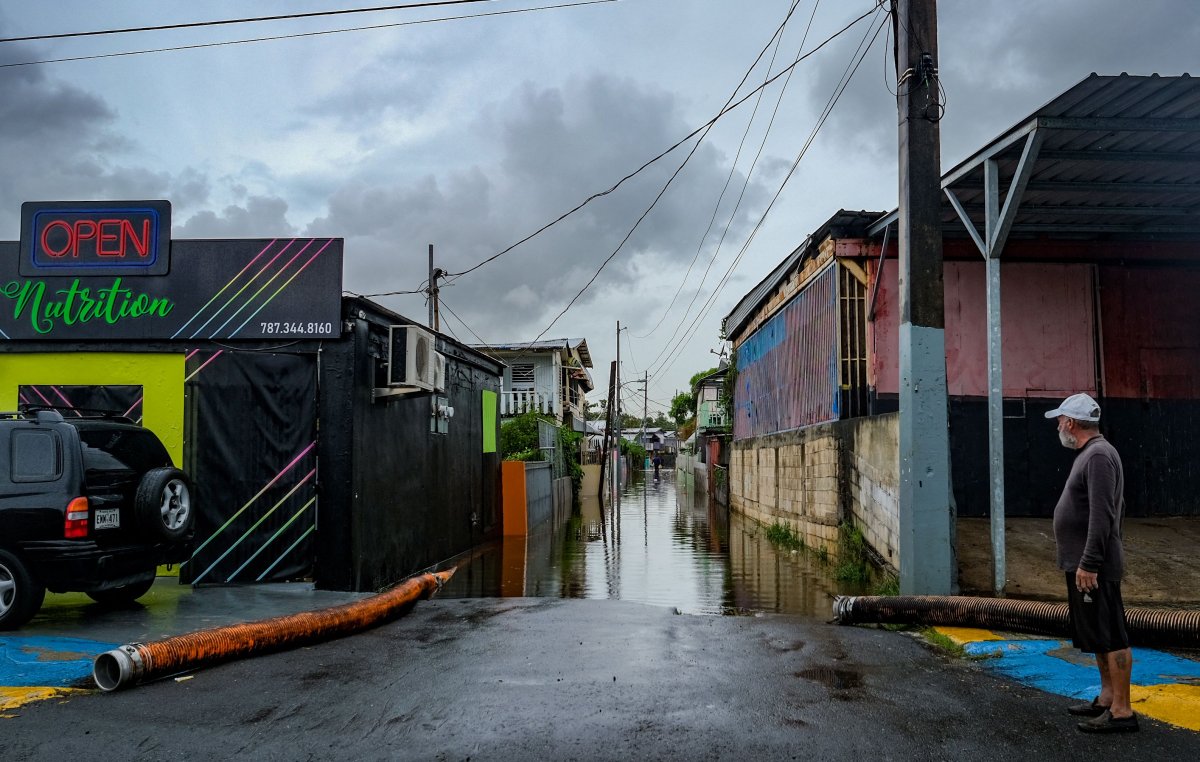The Federal Emergency Management Agency (FEMA) approved nearly $13 billion in 2020 to help rebuild Puerto Rico's power grid after 2017's Hurricane Maria devastated the island, but the island's electricity system still remained vulnerable as Hurricane Fiona struck last week.
Hurricane Fiona hit Puerto Rico as a Category 1 hurricane, leaving much of the island without power due to heavy rainfall and sharp winds. Half of the island still remains without power, and the Puerto Rico Electric Power Authority and Luma, the companies that manage electricity on the island, have not clarified exactly when power can be expected back, according to the Associated Press.
Recovery efforts remain underway, and President Joe Biden approved an emergency declaration Sunday before the storm made landfall, allowing for a swift response from federal agencies. However, Hurricane Fiona struck the island as it was still recovering from Hurricane Maria.

Hurricane Maria in 2017 wiped out much of the island's infrastructure and power grid. It took 11 months for Puerto Rico to fully restore power following the storm, and the power grid has remained vulnerable. In 2020, the Trump administration approved $9.6 billion in federal funds to repair the island's electricity grid, and additional FEMA funds brought the total package to more than $12.8 billion.
Here is how FEMA has spent some of these funds.
How FEMA Spent Hurricane Maria Funds
FEMA has spent billions of dollars to help rebuild Puerto Rico since the 2020 funds were approved—but much of those funds have gone toward emergency spending, rather than permanent works according to a FEMA press release from June.
The agency has spent spent $1.6 billion in emergency spending and $7.1 million for permanent works, according to the press release.
FEMA describes permanent works as including "repair, restoration, or replacement of a facility to its pre-disaster design and function." This can include roads and bridges, water control facilities, utilities and work on buildings. Emergency work, on the other hand, includes debris removal and emergency protective measures.
"The reconstruction of the electrical grid has already begun and the purchase of the equipment under this significant obligation will allow for the streamlined development of other projects. Currently, we have disbursed $1.6 billion in emergency categories and $7.1 million for permanent works," Manuel A. Laboy Rivera, executive director of the Central Office for Recovery, Reconstruction and Resiliency, said in the statement.
Additionally, another $700 million has been spent to restore Puerto Rico's power grid, and $9.6 million has been spent on mitigation measures such as replacing poles that can withstand powerful wind and emergency generators, according to FEMA.
Potential Challenges to FEMA Spending
A U.S. Accountability Office report published last week outlined some of the challenges local and federal officials have faced while trying to rebuild the island's infrastructure.
Some Puerto Rican officials, for instance, had little knowledge of federal processes of securing FEMA grants. Local and federal officials have also clashed on the scope of some projects.
Meanwhile, inflation is driving up the cost of some projects in Puerto Rico. Officials have also struggled to secure resources including contractors and equipment needed to start construction projects, according to the report.
Uncommon Knowledge
Newsweek is committed to challenging conventional wisdom and finding connections in the search for common ground.
Newsweek is committed to challenging conventional wisdom and finding connections in the search for common ground.
About the writer
Andrew Stanton is a Newsweek weekend reporter based in Maine. His role is reporting on U.S. politics and social issues. ... Read more
To read how Newsweek uses AI as a newsroom tool, Click here.








